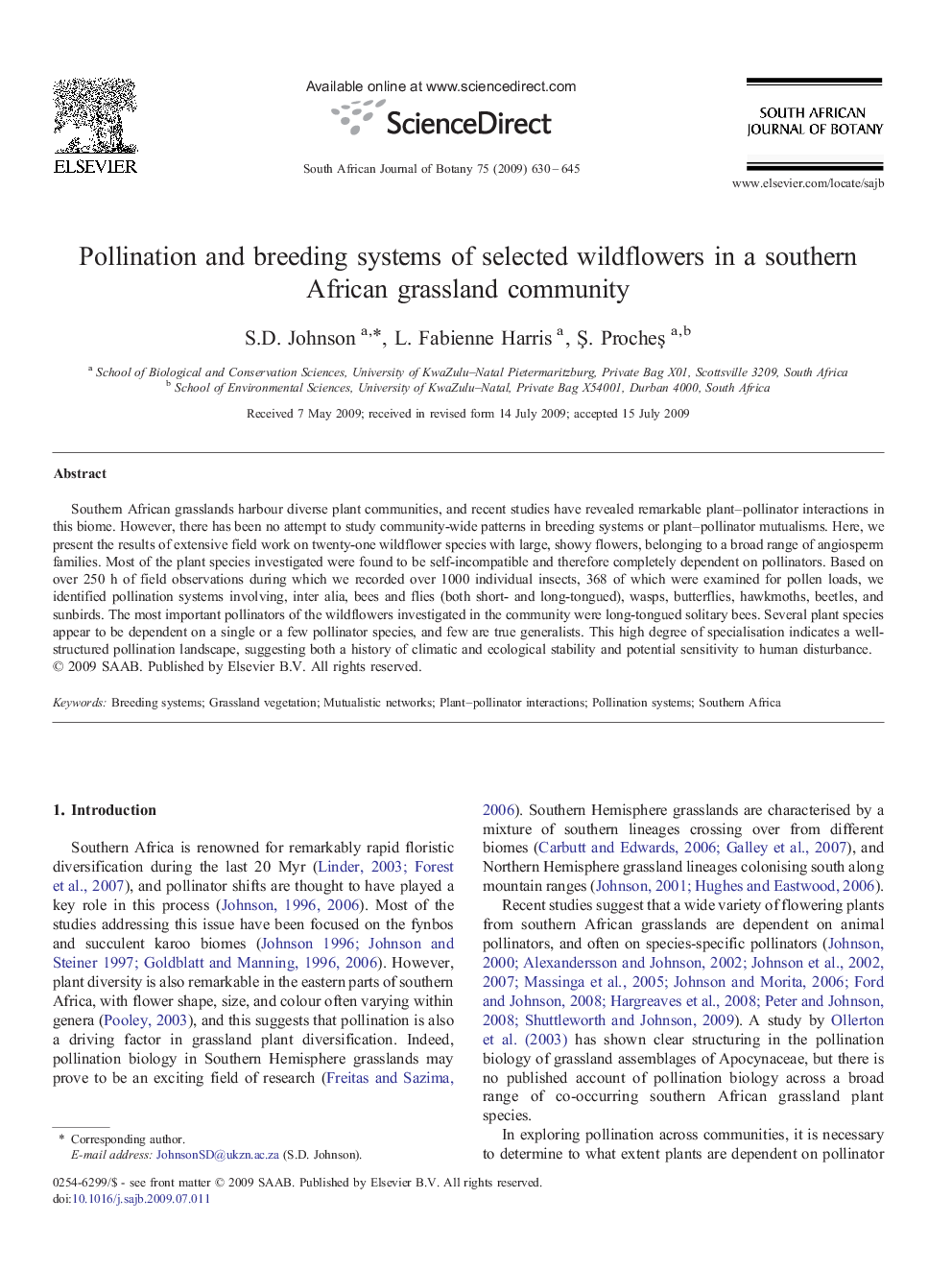| Article ID | Journal | Published Year | Pages | File Type |
|---|---|---|---|---|
| 4521458 | South African Journal of Botany | 2009 | 16 Pages |
Southern African grasslands harbour diverse plant communities, and recent studies have revealed remarkable plant–pollinator interactions in this biome. However, there has been no attempt to study community-wide patterns in breeding systems or plant–pollinator mutualisms. Here, we present the results of extensive field work on twenty-one wildflower species with large, showy flowers, belonging to a broad range of angiosperm families. Most of the plant species investigated were found to be self-incompatible and therefore completely dependent on pollinators. Based on over 250 h of field observations during which we recorded over 1000 individual insects, 368 of which were examined for pollen loads, we identified pollination systems involving, inter alia, bees and flies (both short- and long-tongued), wasps, butterflies, hawkmoths, beetles, and sunbirds. The most important pollinators of the wildflowers investigated in the community were long-tongued solitary bees. Several plant species appear to be dependent on a single or a few pollinator species, and few are true generalists. This high degree of specialisation indicates a well-structured pollination landscape, suggesting both a history of climatic and ecological stability and potential sensitivity to human disturbance.
